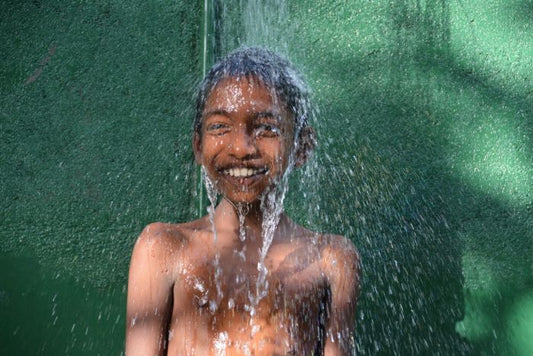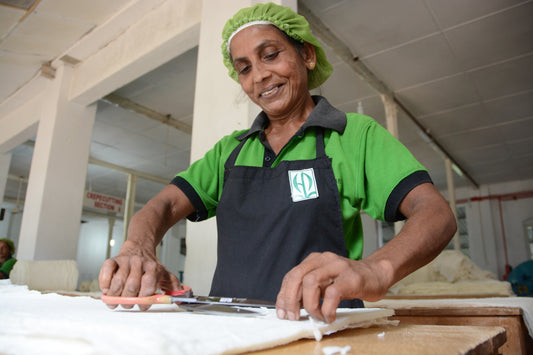Fair Rubber e.V.
For member companies and licensees, paying a Fair Trade premium is a key commitment. The Fair Rubber Association monitors both the transfer of funds and the decision on what Fair Trade premiums are used for the decisive criterion here is that the rubber producers can decide themselves how to use the additional income. Adherence to the Fair Rubber criteria is controlled by independent auditing firms – whereby (unlike most other ‘labels’) the Fair Rubber Association pays the costs for these audits: As we cannot guarantee whether/how many orders and thus Fair Trade payments go to a producer partner, we want to make sure that participation in Fair Trade does not lead to extra costs for disadvantaged producers.
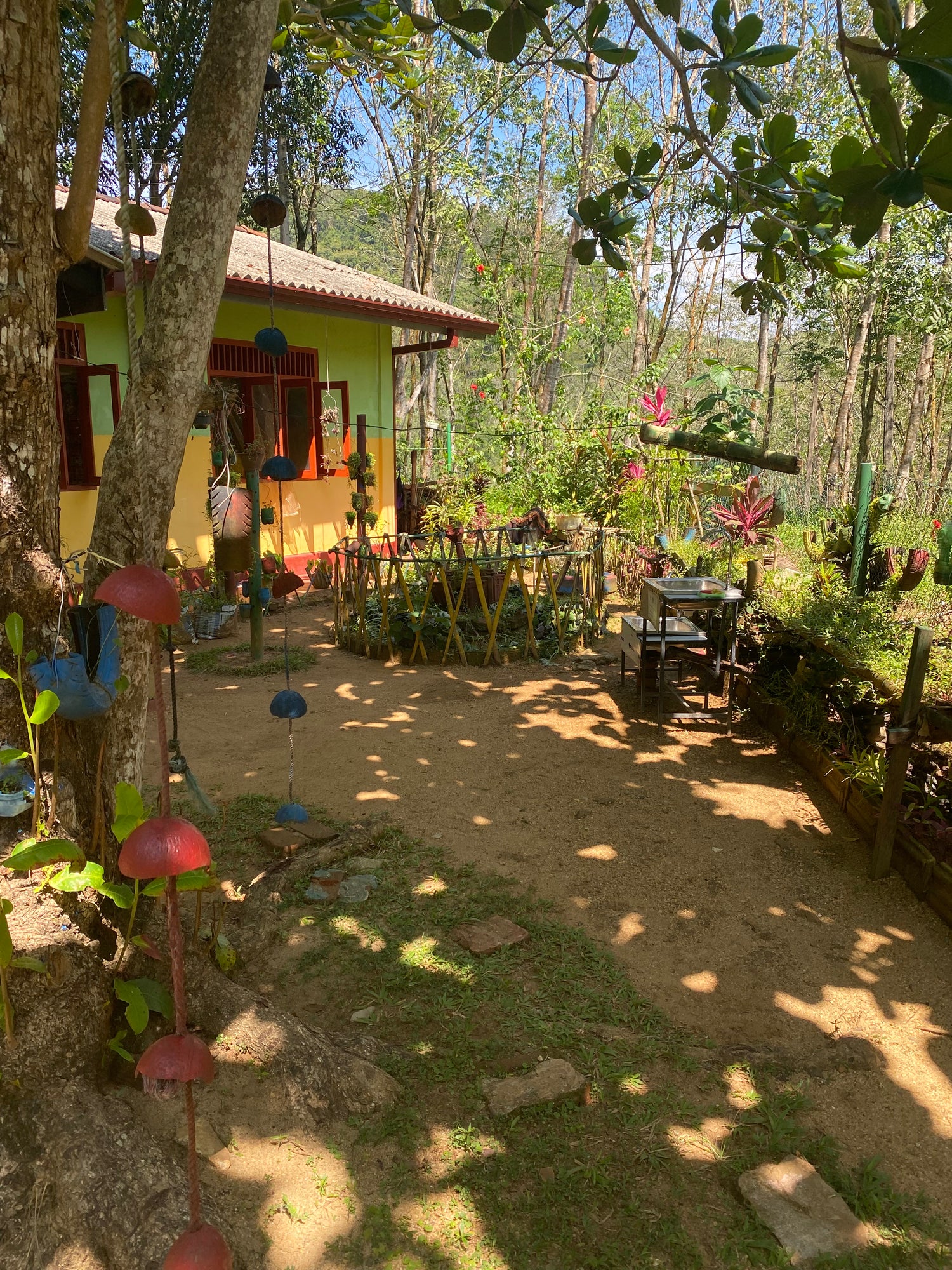
Successful social engagement
Fairly produced rubber has only atiny market share. Since 2012 just around 2,260 tons of dry rubber content have been traded according to the criteria of the Fair Rubber Association. Because of this, more than 1,130,000 € of Fair Trade premiums could be passed on to our producer partners and have been used there for a wide range of different Fair Trade projects (as of June 2022).
CRITERIA FOR FAIRLY TRADED NATURAL RUBBER
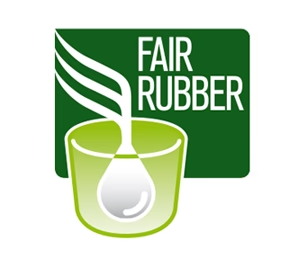
The members of the Fair Rubber Association pay 0.50 € per kilogram of Dry Rubber Content (DRC) to the Fair Rubber Association. This Fair Trade premium is passed on by the Fair Rubber Association to separate accounts to those supplier partners, from whom the Fairly traded rubber was sourced.
The following are the main criteria for the use of the premiums:
The Fair Trade premium may only be used for the improvement of the living and working conditions of the primary producers of natural rubber. The key is: these primary producers decide themselves how to use the premium.
In the case of plantation partners, they must have a joint body which consists of elected representatives of workers and delegates from the management. This body exclusively decides what the Fair Trade Premiums are to be spent on. In the case of small farmer associations, it is usually the board which decides about the use of the Fair Trade premiums.
Since 2018, the Fair Rubber Association has developed its own criteria catalogue for Fairly traded natural rubber, which is audited by independent auditors. Unlike other certifications, the Fair Rubber Association pays the costs of these audits.
The Fair Rubber criteria are closely based on the relevant criteria of Fairtrade Labeling Organizations (FLO) International - rubber plantations are structurally very similar to tea plantations: In India and Sri Lanka, for example, rubber and tea plantations are often run by the same operating companies - and the workforce belongs to the same unions. As far as the environment is concerned, the Fair Rubber criteria include the relevant criteria of the Forest Stewardship Council (FSC) - the majority of the supplier partners are also FSC certified (and here the Fair Rubber Association also partly finances the audit costs).
For supplier partners that already have the FLO or FSC certification, or that are certified organic, only a small part of the Fair Rubber criteria needs to be reviewed separately: our aim is to help disadvantaged producers - not to overload them with never-ending audit requirements. Fairly traded rubber has only a tiny market share. However, since 2012 more than 2,260 tons of Dry Rubber Content have been traded according to the criteria of the Fair Rubber Association. This is equivalent to EUR 1,130,000 Fair Trade premium (as of June 2022).
FAIR TRADE FUND PAYS FOR EMERGENCY MEDICAL EXPENSES
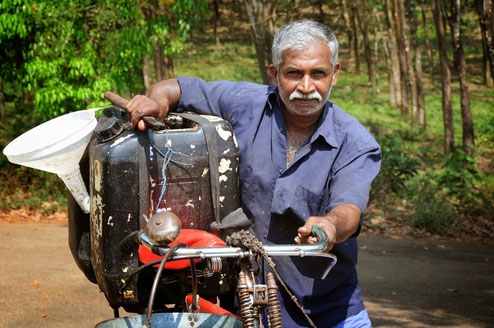
Ms. Saradha (aged 48) has been working for 25 years as a field worker in the nursery for rubber trees on the New Ambadi Estate. Her husband, Sardar Shiva, has mental health problems, which is why she has to provide for her family on her own. Her daughter, Sandhia, is 21 years of age and married, while her son Samil is doing well in his studies to become an electrical engineer.The family are living in a small brick house, which consists of three rooms, to which has been added a lean-to shed made from planks and a plastic roof, which houses the kitchen. The living quarters have electricity, but water has to be drawn from a neighbor's well. The family is the proud owner of one cow and three goats.
In January 2009 Ms Saradha needed to undergo an operation, for which the official health insurance only paid Rs 4000 out of the total sum of Rs 7000. The joint body agreed to make up the difference using the Fair Trade premium fund. Happily, Ms. Saradha has made a complete recovery following her operation. Mr Dadmanabhan (aged 58) has also benefited from the Fair Trade fund. He has been working as a rubber tapper for 38 years. He has two sons (aged 25 and 23 years respectively) and one daughter (aged 28).
The younger son, Mahesh, who had trained to become a driver, had just received his license and was looking for work, when one day his motorcycle hit a pothole and he was flung onto the side of the road. Furthermore, his motorcycle landed on top of him, and he suffered a broken hip. To make matters worse the health insurance, which his parents had, only covered children up to the age of 19. The costs of having the hip fixed amounted to Rs. 200,000, and even nine months later, Mahesh still has a pronounced limp. He is also still looking for work.
The Fair Trade premium fund at least helped keep the financial damage within limits by providing Rs. 100,000 in support, which were particularly helpful in the first stages of emergency medical support.
Mr. Dadmanabhan in New Ambadi: Payment of the treatment costs through the Fair Trade fund.
FAIR TRADE MONEY PAYS TOWARDS EDUCATION
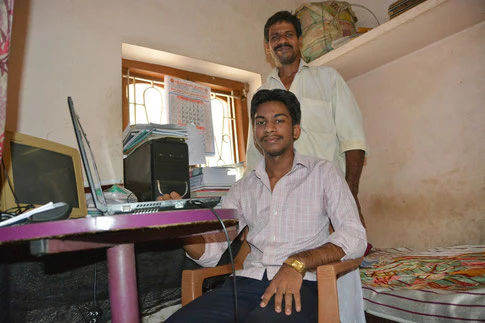
C. Nesyan is beaming when he talks about his son. Niksan is 19 and starting his second year at James College of Engineering. The four-year course in mechanical engineering will cost Rs 200,000 which includes tuition and exam fees, costs for books, transport and the required college uniform.It's a lot of money for Nesyan who is a rubber tapper and earns about Rs 12,000 a month. In the yard behind the house his wife, Pushpalila, keeps six cows. Three are milking at present, yielding 15 liters a day. Pushpalila gets Rs 30 per liter and she sells the cow dung as well.
But it's the Fair Trade education grant that really helps with Niksan's college fees. The Fair Trade committee is strict: to be eligible a student has to provide a detailed bill from the college and do well academically - only with marks above 60% the annual grant will be given. For a course like the one Niksan takes the joint body has just raised the grant from Rs 8,000 to 10,000 a year. A graduation course grant comes to Rs 3,125 p.a., a nursing course Rs 5,000 p.a.. Students can be given a grant every term and if several children of one family attend further education, each is eligible.
Nesyan knows the rules by heart, next year his daughter wants to go to college too. Nipsy is 17 and in her senior year at school. She too wants to study engineering. Niksan's college is in Nagercoil, about 40km from New Ambadi. He takes the college bus at 7.15 am in the morning, his classes start at 9 am and run until 4.30 pm. He's home by 6.30 pm and has to do two to three hours of homework at night. Niksan is very relieved that his grant for the second year has been approved. He attended a Tamil medium school and struggled in his first year at college because all classes are taught in English. But his language skills have improved and he enjoys learning. Once he's got his degree Niksan wants to work abroad where he thinks he will be able to earn more money. He realizes that despite the Fair Trade grant, sending him and from next year his sister to college is putting a heavy burden on the family. His father says he will have to apply for an interest free loan from the joint body and he will take a loan against his retirement fund if needed - whatever it takes, his kids will get an education. The grants and interest free loans financed through the Fair Trade premium make the life of Nesyan just that little bit easier.
FAIR TRADE PREMIUMS PAY FOR AN EDUCATIONAL FUND
Shymala and her granddaughter Roopa are living in one of the so- called 'line rooms' in the New Ambadi rubber plantation. These living quarters are small, but nevertheless much in demand by the workers: after all, every unit has a power supply, piped water, and a toilet. Furthermore, there is a small garden attached to each unit, which allows families to grow vegetables and keep chickens for their own requirements. Hence there is even a waiting list for these line rooms, as the alternative is to rent expensive accommodation in one of the surrounding villages. Shymala is working in the latex factory which belongs to the plantation. She is a trade union leader, not only for the workers on the plantation but also for the whole district. In addition, Shymala is a member of the joint body, i.e. the committee which was put in place when New Ambadi made the first sales of natural rubber under Fair Trade conditions. The latex supplied was used for the manufacture of Fairly Traded sports balls in Pakistan.
The joint body meets on a regular basis. Decisions are recorded in a minute book. One of the decisions which has been made is to save up further Fair Trade payments, so as to collect enough money to establish an educational fund to support the further education of plantation children. Even though education in India is supposedly 'free', children only really have the chance of a better future if they have had some higher education at a private institution. At least 90 tons of rubber have to be sold in order for the fund to be large enough to finance a few scholarships. Shymala's hope is that Roopa will be one of the first beneficiaries - her hope is that she will train to become a nurse. But the three-year course costs more than EUR 4000 - a sum which she could never afford from her income as a factory worker. A second big achievement of the plantation is its certification with the Forest Stewardship Council (FSC) - the monitoring system for responsible forest management, which, in this instance, monitors the environmentally-sound production of natural rubber.
THE RIGHT TO LEARN
It is one of the key principles of the concept of Fair Trade that the 'recipients' of the Fair price, or Fair Trade premium, are absolutely free in their decision on how they spend the extra income. In the case of the Fair Rubber Association the 'recipients' are the farmers and workers of our supplier partners The role of the FRA is to ensure that its members pay the correct Fair Trade premium, that it reaches the correct suppliers - and later on to check that this key principle was followed, i.e. the recipients decided the use of the premium: Therefore we don't just check the account books (easy, as the Fair Trade premium goes to a separate account as far as plantation suppliers are concerned).More importantly: we look at the minute book of the joint body, i.e. the committee made up of worker representatives (and some from the management) to see who took what decision when. Long experience show that the workers themselves know best what they need/want most.
Nevertheless: Things can go wrong in unexpected ways and despite of the best intentions: One joint body came up with a scheme to financially support bright students for further studies: Applicants were required to graduate from high school with excellent grades, and following that their progress at college was monitored year after year. Only if sufficient credits were earned, was the stipend continued. So what could go wrong? Well, as it turns out, even hard earned college degrees don't come with a job guarantee. There may be too many graduates of a particular subject (engineering seems to be an oversubscribed course), and the teaching of some colleges may simply not be good enough/not prepare their students well enough for work life afterwards. We have heard from one young man who failed to find a job - and regrettably there is nothing we (and presumably the joint body) can do. Except, perhaps, review the strategy overall: Maybe stipends should be used to encourage vocational training courses instead of purely academic ones? That's one idea the supplier partner came up with - and we can only hope that they get it right and future disappointment of 'successful graduates' can be avoided.
BRIDGE MAKES CONNECTIONS
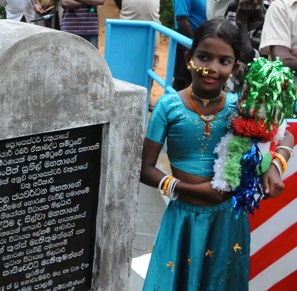
Twelve year old Sinusia has a good reason to smile: she will have a lot less walking now that the bridge, built with Fair Trade money, is ready. Sinusia lives with her parents and about one hundred other families in the isolated Govinna-section of the plantation.To get just about anywhere was either a very long walk or an expensive ride with a motorcycle cab. But what everyone dreaded most were medical emergencies. An ambulance would have to come on an eleven kilometer long route. With the new bridge the hospital is just three kilometers away, which means getting help is not only a lot quicker, it is also cheaper - less than a third of the price that had to be paid for the old, long route.
And a nearby village benefits too. Twice a year their access to the main road gets flooded, isolating as many as 4000 people. Now they can use the new bridge during the monsoon rains. Generations of workers have been asking for a bridge to be built, the plan was suggested more than 60 years ago. A good start for the Fair Rubber Association: The bridge is the first Fair Trade project since it was founded in 2012. Small wonder, the plantation workers decided to celebrate the opening and erect a stone to commemorate the event. It's been a very long wait for a short journey.
FAIR TRADE MAKES THE CONNECTION
Lalita Ayrangani's day starts early. She gets up at 4.30 and starts cooking for the whole family, rice, curries and sambols for breakfast and lunch to be taken along to work. Her son and his wife, her daughter and her four-year-old grandchild live next door. At 6 am 44-year-old Lalita walks to the rubber factory, work starts at 6.30. Until recently she had to get up even earlier: more than a year ago the tank that fed the water pipes at Lalita's house collapsed which meant she and everyone else in the family had to walk to a water source about half a kilometre away several times a day to get all the water needed for cooking and drinking.
The joint body agreed that the restoration of the water tank was a priority and since the work has been completed the faucet behind Lalita's house supplies water again and when she's filled up one of the wide-bellied stainless steel vessels she's just got to step around the corner into her kitchen. Lalita returns from work at around 3.30 pm. Usually she stores for some groceries in the estate's coop store and for vegetables at nearby stalls. When she comes home she plays with her granddaughter, washes the family's clothes, has a bath and prepares the evening meal. Lalita's children all work in the garment companies. Transport is provided, but the income is low, just Rs 12,000 per month. Why are they not working on the plantation where they could earn more? Lalita smiles and shrugs - the work in the garment factory is clean, she says, and the children are educated, they think plantation work is not for them. 'Many young people work for a few years in the garment industry' says Horana manager Nisala Jayawardena, 'but once they reach 30 they have enough of long commutes and noisy factory halls and they apply for jobs on the plantation'.
Lalita came to Horana with her parents and grandparents when she was 7 years old, her father still works in the factory, her mother is retired. Since the death of her husband she has two rooms to herself. Her living room with its lovingly arranged display of family photos and small knickknacks leads out onto a small veranda. The other family members share the rest of the house, two bedrooms and a living room with an array of artificial flowers and a small television set in the corner. The children come home at 7.30 and the living room is where everyone gets together for the evening, just in time for the Sinhala soap operas on TV. What are Lalita's hopes for the future? Now that the water is running again she is content, she says. She just wants her children to do well and settle down somewhere nearby in their own homes.
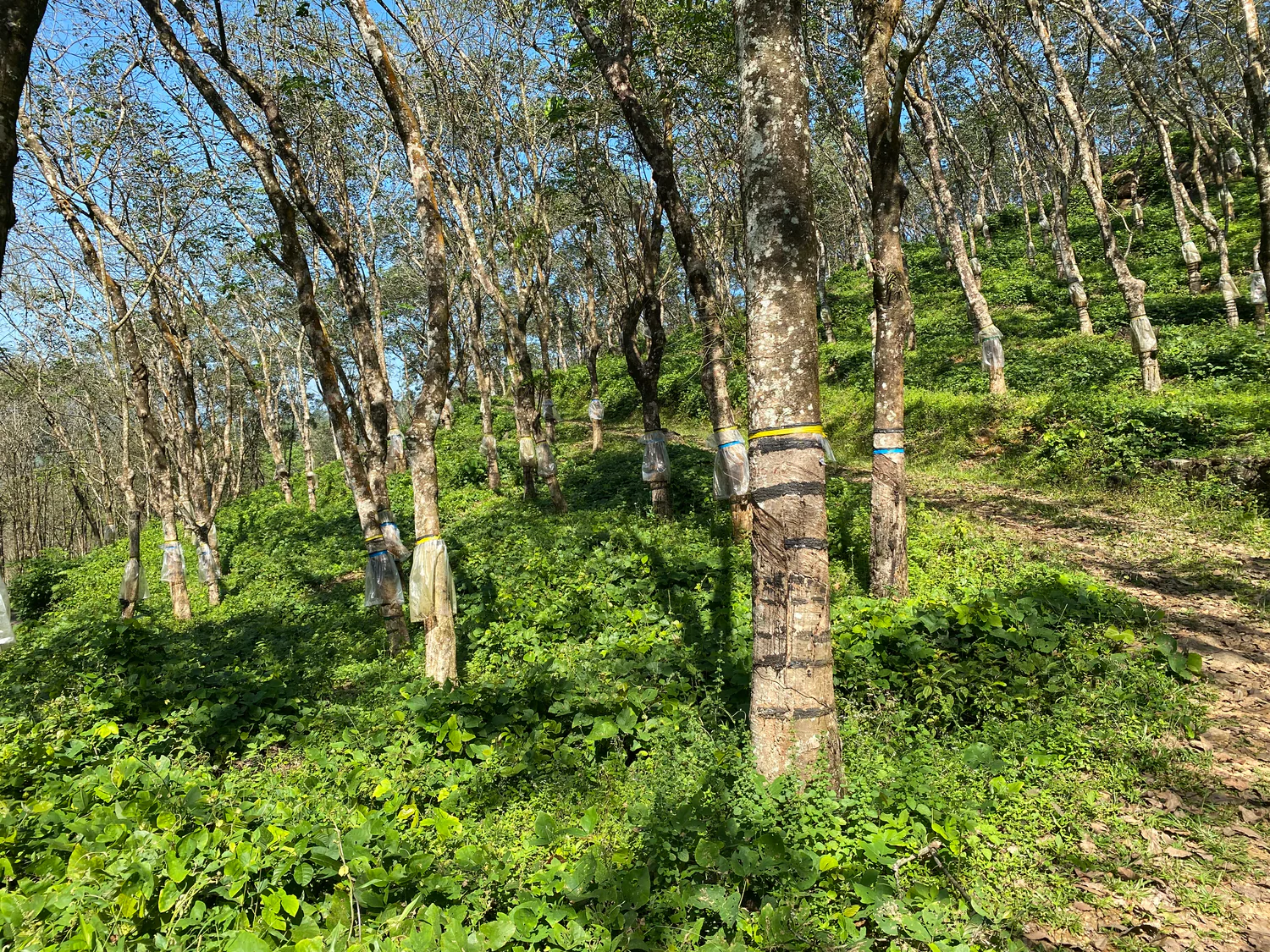
WHAT IS RUBBER ?
Natural rubber is produced by the rubber tree (Hevea brasiliensis). In order to collect the latex milk from tree, an incision is made in the bark of the rubber tree - which is called 'tapping'. Depending on the use, following the tapping stage the latex milk is processed in different ways. About 70 per cent of natural latex is used for tires. Other products made of natural rubber are e.g. mattresses, condoms, shoe soles, hot water bottles, balloons, rubber boots and seal rings. Natural rubber can be substituted by synthetic rubber for some applications. Synthetic rubber is made from petroleum (i.e. fossil fuel). In many products - such as car tires - natural as well as synthetic rubber is used. More detailed information about rubber, you can find here or in this study by Aidenvironment.
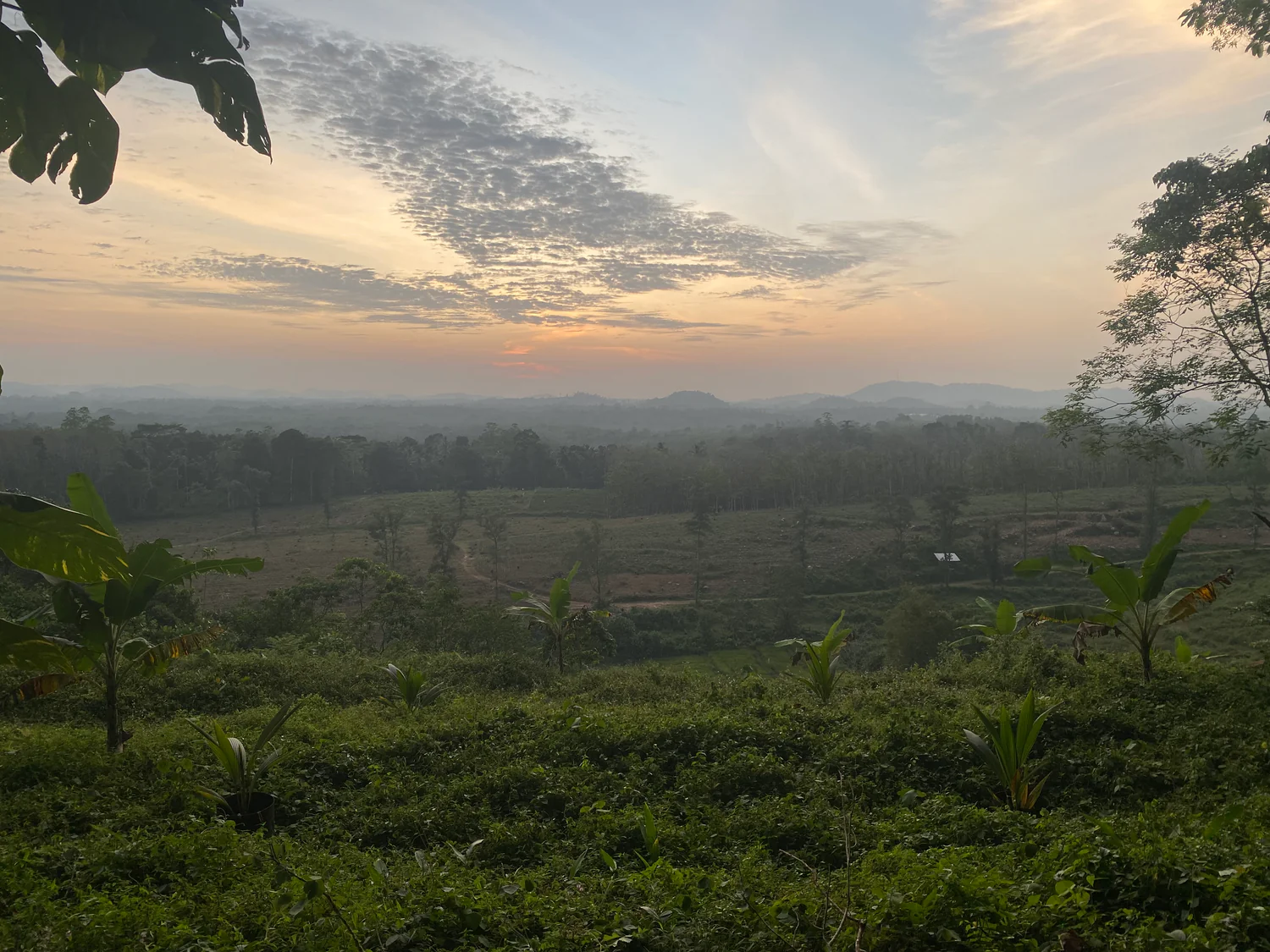
PROBLEMS IN NATURAL RUBBER PRODUCTION
The production of natural rubber can be characterized with ecological and in some cases severe social problems. Low world market prices for natural rubber make it more and more difficult for latex producers to make a living from tapping rubber. Furthermore, studies document cases of extremely poor working conditions. Typical problems include inadequate safety standards, inappropriate use of toxic chemicals, discrimination, excessive working hours and child labor. Agrochemicals used in the production of natural rubber are less controversial with regard to any residue in the final rubber products. Far more important is that their use threatens the health and well being of the people involved in the production and processing of the natural rubber. More information about sustainability problems and solutions in the rubber sector, you can find here.
RUBBER : LOW PRICES DRIVE PRODUCER INTO POVERTY
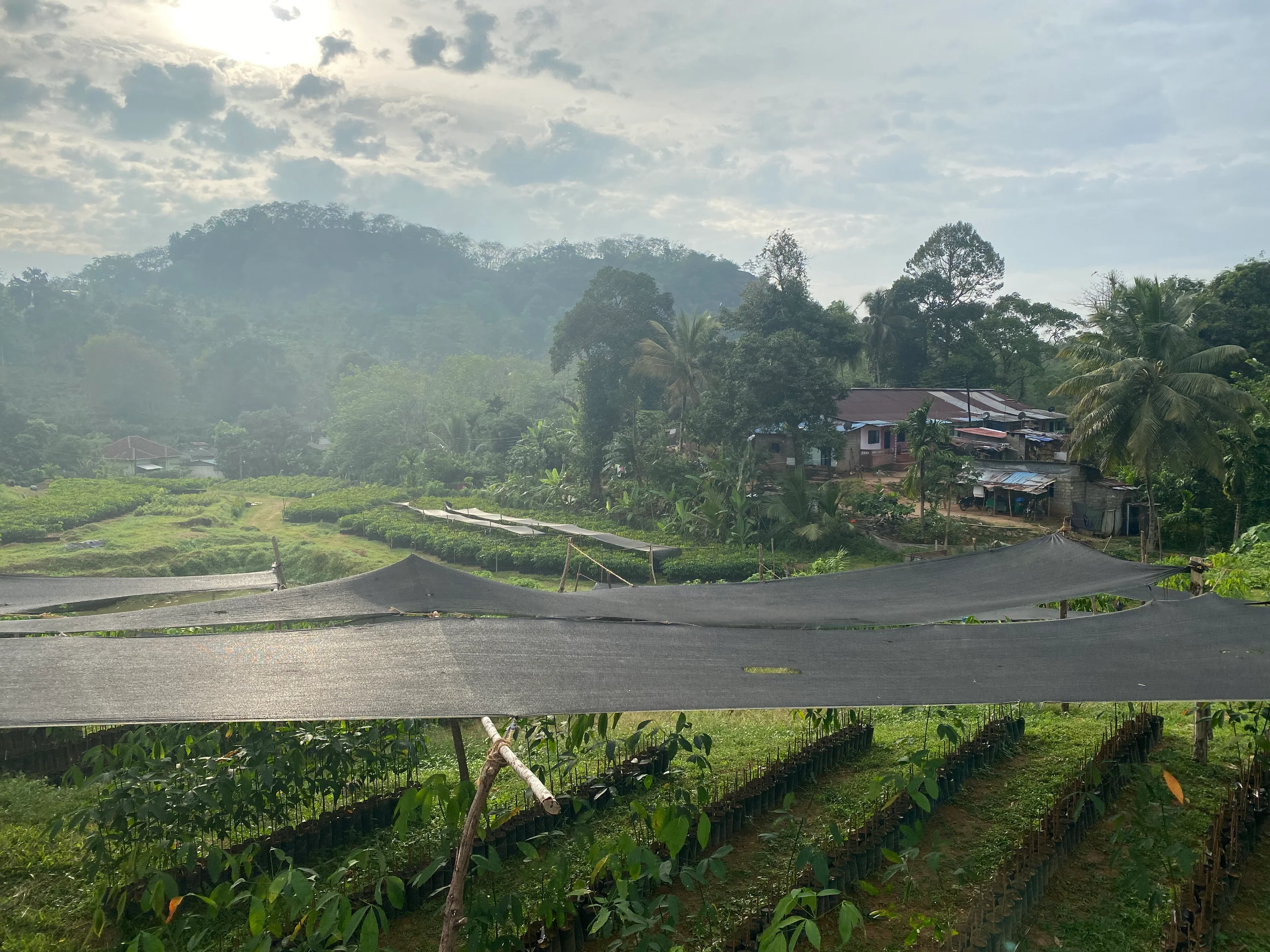
Low prices drive natural rubber producers into poverty and serious violations of working rights are common. This is the harsh reality revealed in a new study conducted by Aidenvironment. The comprehensive review of literature reveals numerous cases of inadequate safety standards, inappropriate use of toxic chemicals, discrimination and structurally long working hours and child labor. It points to the need for more responsible sourcing practices by the rubber industry with particular attention to fair trading conditions.
The world market prices for natural rubber fluctuate strongly. For years, they have fallen drastically. In recent years, they have fallen drastically. At current prices, many small-scale rubber producers and plantations cannot even cover their costs of production. This pushes smallholders into poverty and makes it difficult for producers to provide good working conditions for workers. Some plantations cut down rubber trees and shift to more profitable crops such as palm oil. This is bad news for the environment: As rubber trees sequester more carbon than most other tree crops, this shift reduces climate change mitigation. To combat negative sustainability impacts and capture potential opportunities, the report stresses how important it is to improve trading conditions, including the payment of a fair price for natural rubber.
As a comprehensive solution to the main sustainability issues in the rubber industry, the report points at the Fair Rubber Association. It combines high ecological standards with fair working conditions. For one, plantations working with Fair Rubber have to be FSC certified. Secondly, small-scale farmers and plantations in South India and Sri Lanka receive a Fair Trade premium. The premium is used for projects to improve living and working conditions. Successful projects paid by Fair Trade premiums include the construction of a training center, support for higher education, drinking water supply systems, and the first supplementary pension scheme for rubber tappers in the industry. Whatever the project: The primary rubber producers decided themselves - and continue to do so how the premium is to be spent.
Natural rubber is used in many products, such as tires (the automotive industry represents 75% of global demand), gloves, tubes, balloons and condoms. The international demand for natural rubber has driven a steady expansion of industrial and smallholder plantations in the past decade. Asia today represents more than 90% of the total area under rubber cultivation and 80% of world production. The largest consumers of rubber are China, EU, USA, India and Japan. You can download the complete study by Aidenvironment below.


